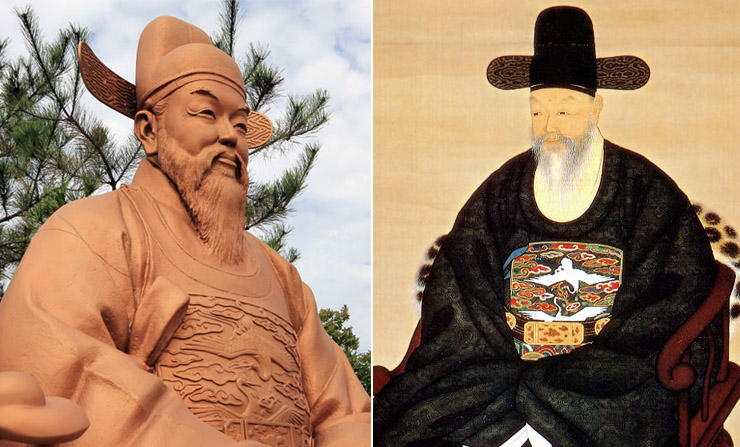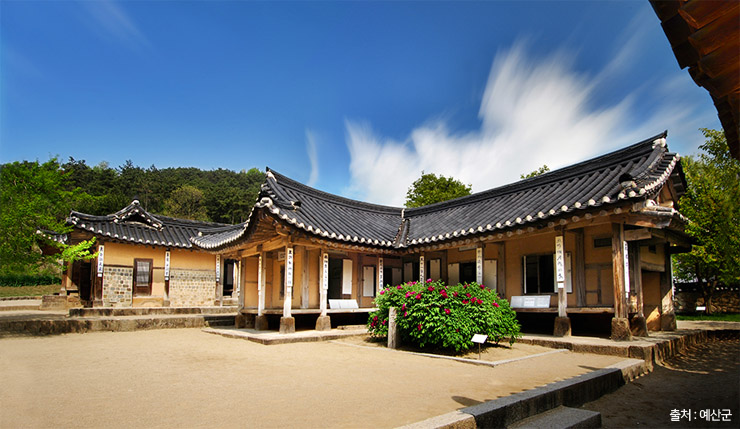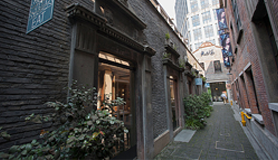HMAP World Story

김정희 (1786-1856)
김정희는 명문가 출신으로 실학자인 박제가의 문인이 되어 연암 박지원의 학통을 계승한 북학파 실학자이며 조선 후기를 대표하는 고증학자, 서예가, 화가이다. 젊은 시절 중국 청나라에 사신으로 다녀오며, 그곳의 학자들과 교류하면서 당시 동아시아의 새로운 학문과 예술 사조를 폭넓게 받아들였다. 특히 금석문(쇠나 돌에 새긴 글씨) 깊이 연구하여 금석학(金石學)의 개척자로 불린다. 중국의 예서를 비롯한 여러 서체의 장점을 융합한 독창적이고 강렬한 개성이 담긴 서체인 추사체를 창안하여 조선 서예사에 새로운 경지를 개척했다. 김정희는 순조, 헌종 시대의 세도 정치 기간 동안 여러 차례의 유배를 겪었다. 이 시기에 그는 자연 속에서 학문과 예술에 몰두하며 대표작들을 남겼는데 제주도 유배 시절(1844년) 자신의 제자였던 이상적이 어렵게 책을 구해 보내준 것에 대한 감사의 마음을 담아 그린 세한도는 고난 속에서도 변치 않는 지조와 의리를 상징하는 그의 대표적인 문인화로 국보로 지정되어 있다.
Kim Jeonghui (1786-1856)
Kim Jeong-hui, was one of the most celebrated practitioners of calligraphy, epigraphists, and scholars of Korea’s later Joseon period. He is especially celebrated for having transformed Korean epigraphy and for having created the “Chusa-che” Chusa writing style) inspired by his study of ancient Korean and Chinese epitaphs. His ink paintings, especially of orchids, are equally admired.
[Learn more]Source : Wikipedia
□ Sehando /세한도 (국보 180호)

김정희필 세한도
조선 말기의 사대부 서화가 완당 김정희가 1844년 제주도 유배지에서 수묵으로만 간략하게 그린 사의체의 문인화이다. 1840년 윤상도사건에 연루되어 지위와 권력을 박탈당하고 제주도로 귀양 온 김정희에게 사제간의 의리를 지키기 위해 두 차례나 북경으로부터 귀한 책을 구해다 준 역관인 우선 이상적의 인품을 날씨가 추워진 뒤에 제일 늦게 낙엽지는 소나무와 잣나무의 지조에 비유하여 그려 준 것이다.
[자세히보기]출처 : Wikipedia
Sehando
In 1844, during his exile in Jeju Island, Kim Jeong-hui produced this, his most celebrated ink painting, usually known as “Sehando” or “Wandang Sehando”. ‘Wandang’ was one of Kim’s most frequently used ‘Ho’ names; ‘Sehan’ means ‘the bitter cold around the lunar new year,’ ‘do’ means ‘painting’). He gave to his disciple Yi Sang-jeok in gratitude for his friendship.
[Learn more]Source : Wikipedia
ⓢ Chusa House /추사 고택

추사 고택
조선후기의 실학자이며 대표적인 서예가였던 추사 김정희 선생의 생가인 추사고택은 추사의 증조부인 월성위 김한신이 건립한 것으로 알려져 있다. 추사고택은 266.11m²(80.5평)으로 솟을 대문의 문간채, ㄱ자형의 사랑채, ㅁ자형의 안채와 추사 선생의 영정이 모셔져 있는 사당으로 이루어져 있는 가옥이다.
[자세히보기]출처 : 한국관광공사
Chusa House
Chusa Gotaek is the traditional Korean house of the renowned scholar and calligrapher, Chusa (also known as Kim Jeong-Hui). This old house is known to have been constructed by the great-grandfather of Chusa, Kim Han-Sin.
[Learn more]Source : KOREA TOURISM ORGANIZATION








 HOME
HOME


 0
0




